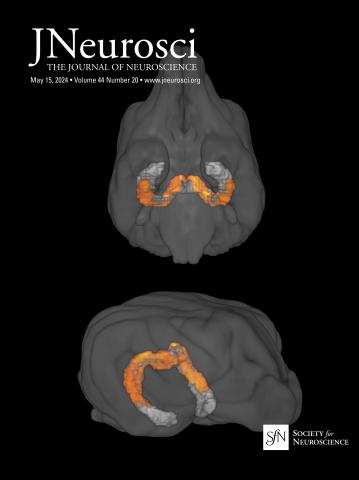Functional alterations in parvalbumin-positive interneurons after traumatic brain injury in somatosensory cortex of mice.
IF 4.4
2区 医学
Q1 NEUROSCIENCES
引用次数: 0
Abstract
Traumatic brain injury (TBI) can lead to long lasting cognitive deficits in the human brain, with a considerable contribution of secondary morphological and functional sequela in cortical regions distant to the lesion site. In order to uncover the role of early functional alterations in parvalbumin-positive basket cells (PV-BCs), an interneuron population required to maintain inhibition of neocortical circuits, to this dysfunctional plasticity, we investigated anatomical and electrophysiological properties of PV-BCs in PV-IRES-Cre-tdTomato mice of both sexes 24h after a cortical impact. These experiments revealed that the number of PV-BCs was moderately decreased around the cortical impact site, while their morphology was unaffected. Patch-clamp experiments demonstrated that TBI increased the input-resistance of PV-BCs and the amplitude of hyperpolarization-activated inward currents (Ih). In addition, the maximal firing frequency upon depolarizing stimuli was decreased. The increase in Ih amplitude was paralleled by the appearance of somatic HCN-channels in immunohistochemical staining and the occurrence of somatic Ih in nucleated-patch recordings, suggesting that TBI induced a redistribution of HCN-channels from a purely axonal to an additional somatodendritic expression. Pharmacological experiments showed that inhibition of axonal HCN-mediated currents impairs the maximal firing frequency of PV-BCs. Additional in-silico simulations disclosed the general importance of axonal HCN-channels to maintain high-frequency firing of PV-BCs by counteracting Na+-K+-pump associated hyperpolarizing currents. In summary, our results suggest that the early loss of PV-BCs and the TBI induced distinct alterations in their electrophysiological properties can contribute to the establishment of disturbed network activity following TBI.Significance statement Brain injuries caused by a traumatic mechanical impact can lead to long lasting cognitive deficits in the human brain. Secondary functional changes substantially contribute to these cognitive deficits. Understanding how traumatic brain injuries (TBI) affect the function of neurons will help to understand the processes leading to cognitive deficits. In the present study we investigated how TBI affects properties of basket-cells, an important class of inhibitory interneurons that regulate brain circuits. We observed that TBI decreased the number of basket-cells and attenuated their action potential firing, mainly by a shift in a single membrane protein. Our results indicate that even subtle alterations in this important cell type can contribute to the impaired function of the brain after TBI.外伤性脑损伤小鼠体感觉皮层小蛋白阳性中间神经元的功能改变。
外伤性脑损伤(TBI)可导致人类大脑长期的认知缺陷,在远离损伤部位的皮质区域有相当大的继发性形态和功能后遗症。为了揭示parvalbumin阳性篮细胞(PV-BCs)的早期功能改变在这种功能失调的可塑性中的作用,我们研究了PV-IRES-Cre-tdTomato小鼠在皮质受到冲击24小时后PV-BCs的解剖和电生理特性。PV-BCs是一种维持新皮层回路抑制所需的中间神经元群体。这些实验表明,在皮层撞击部位周围pv - bc的数量适度减少,但它们的形态不受影响。膜片钳实验表明,脑外伤增加了pv - bc的输入电阻和超极化激活内向电流的振幅(Ih)。此外,去极化刺激的最大放电频率降低。Ih振幅的增加与免疫组化染色中体细胞hcn -通道的出现和核斑记录中体细胞Ih的出现是平行的,这表明TBI诱导了hcn -通道的重新分配,从纯粹的轴突到额外的体树突表达。药理实验表明,抑制hcn介导的轴突电流可损害pv - bc的最大放电频率。另外的计算机模拟揭示了轴突hcn通道通过抵消Na+-K+泵相关的超极化电流来维持pv - bc的高频放电的一般重要性。总之,我们的研究结果表明,早期pv - bc的丧失和脑外伤引起的电生理特性的明显改变可能导致脑外伤后神经网络活动紊乱。由创伤性机械冲击引起的脑损伤可导致人类大脑长期的认知缺陷。次生功能改变在很大程度上导致了这些认知缺陷。了解创伤性脑损伤(TBI)如何影响神经元功能将有助于理解导致认知缺陷的过程。在本研究中,我们研究了脑外伤如何影响篮细胞的特性,篮细胞是一类重要的调节脑回路的抑制性中间神经元。我们观察到,脑外伤减少了篮状细胞的数量,并减弱了它们的动作电位放电,这主要是由于单个膜蛋白的移位。我们的研究结果表明,即使这种重要细胞类型的细微变化也可能导致脑外伤后大脑功能受损。
本文章由计算机程序翻译,如有差异,请以英文原文为准。
求助全文
约1分钟内获得全文
求助全文
来源期刊

Journal of Neuroscience
医学-神经科学
CiteScore
9.30
自引率
3.80%
发文量
1164
审稿时长
12 months
期刊介绍:
JNeurosci (ISSN 0270-6474) is an official journal of the Society for Neuroscience. It is published weekly by the Society, fifty weeks a year, one volume a year. JNeurosci publishes papers on a broad range of topics of general interest to those working on the nervous system. Authors now have an Open Choice option for their published articles
 求助内容:
求助内容: 应助结果提醒方式:
应助结果提醒方式:


